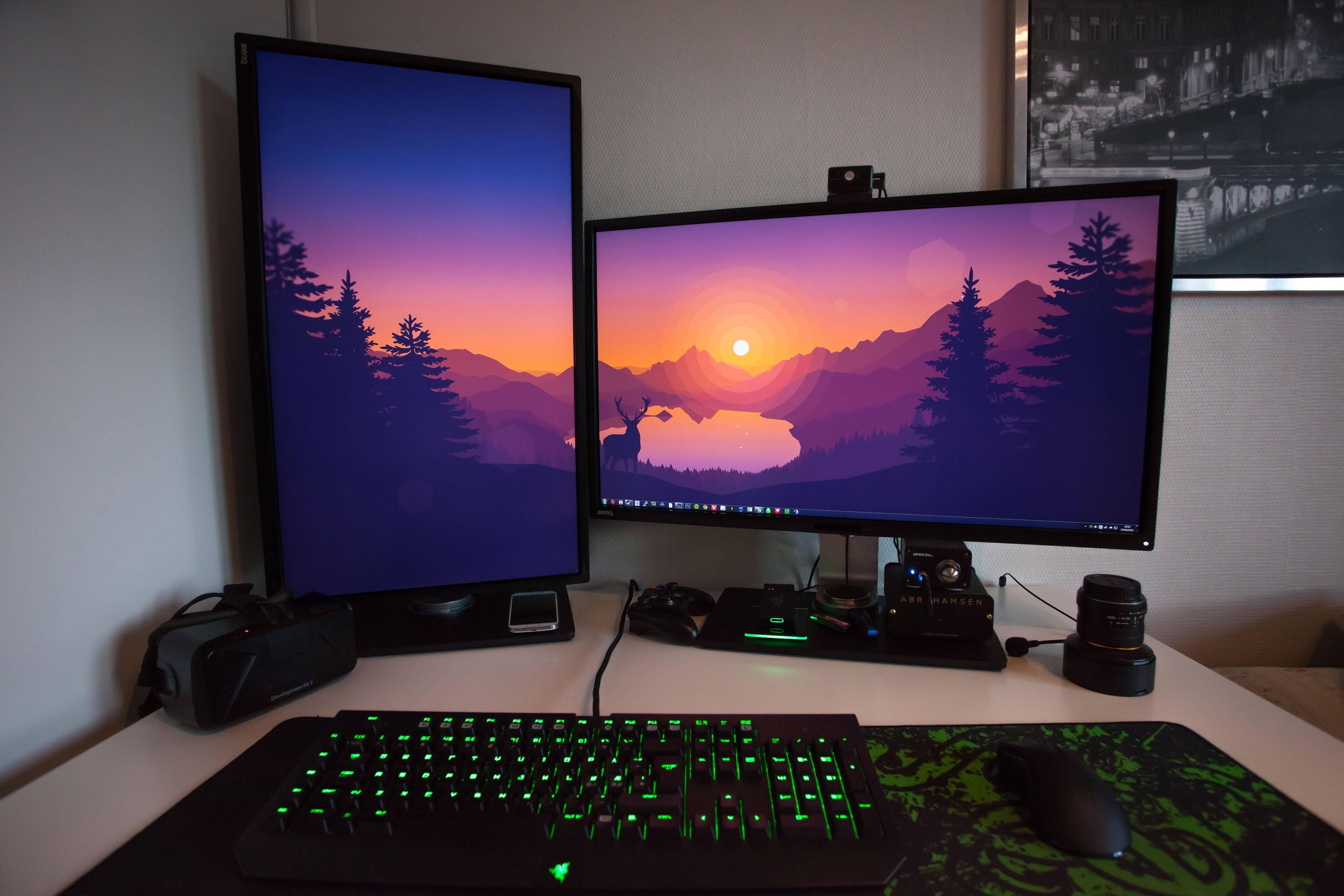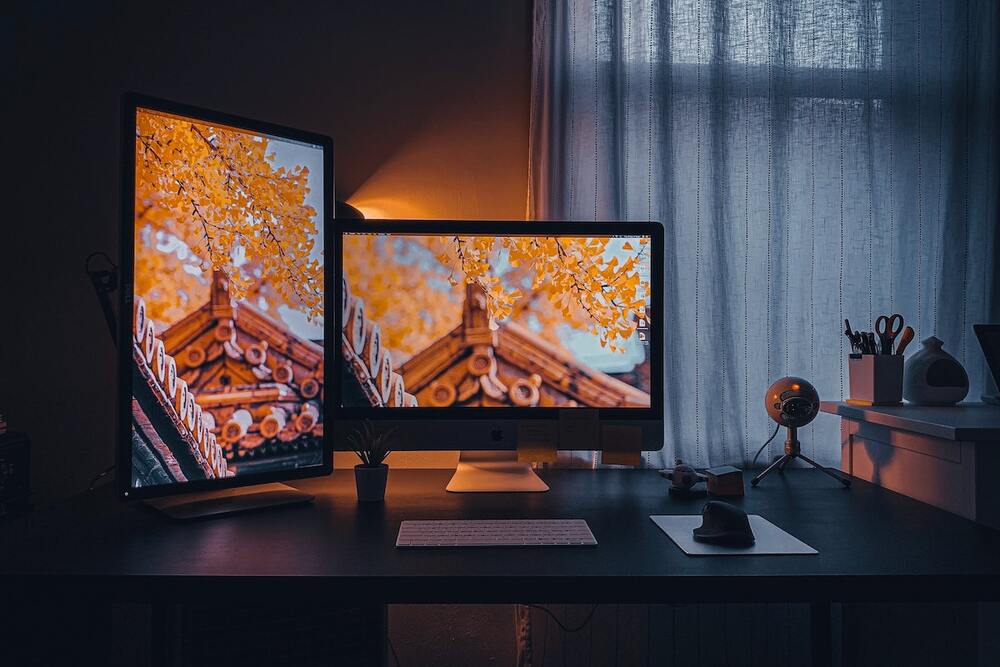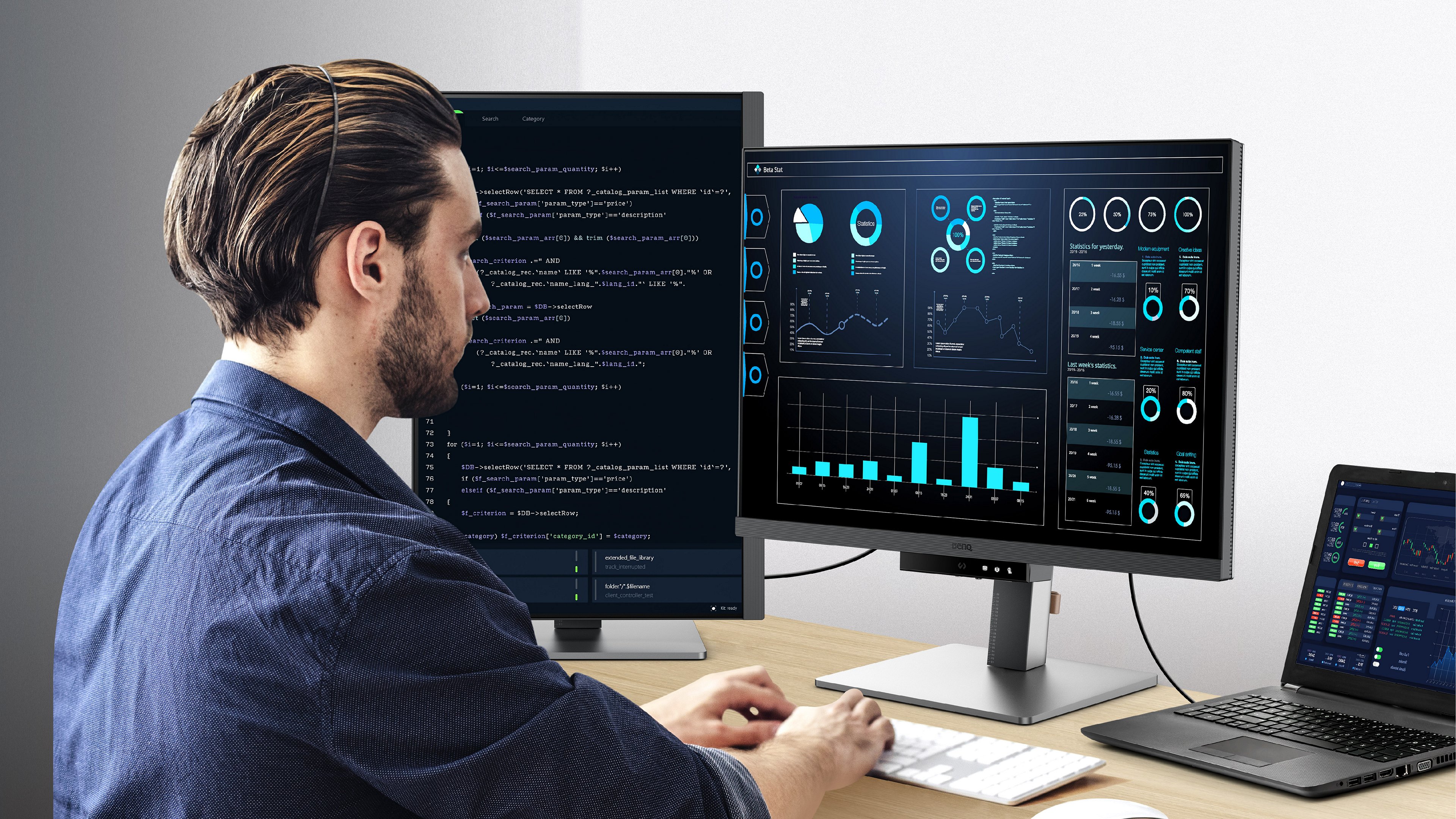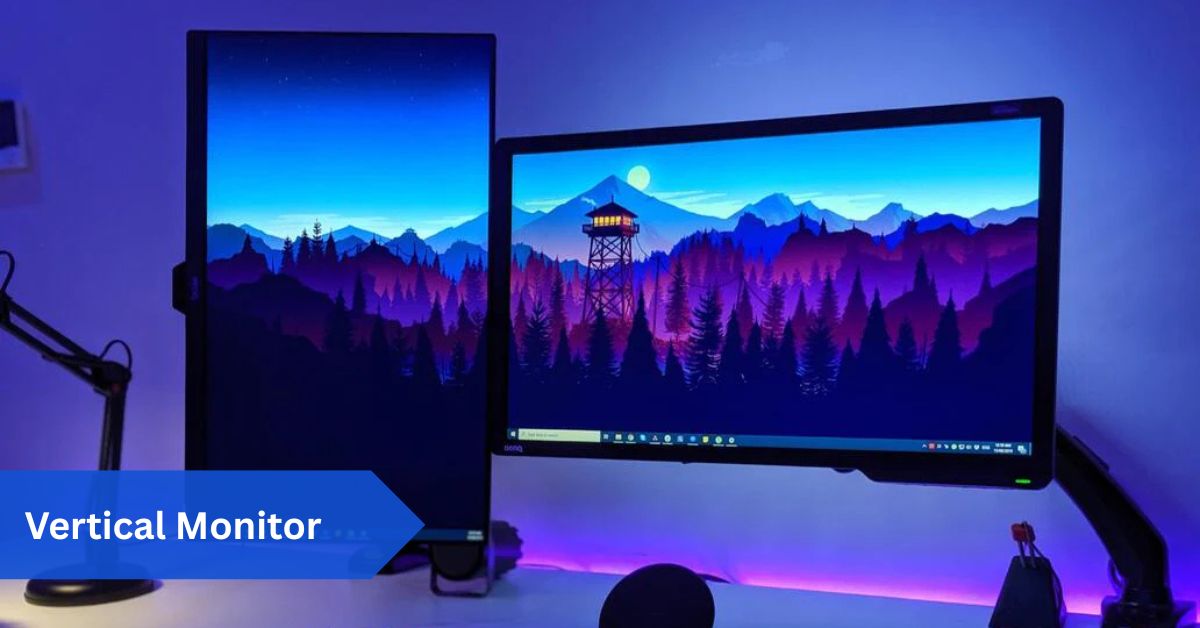Introduction:
Have you ever noticed a monitor standing tall instead of wide and thought, “That looks different”? That’s a vertical monitor setup, and it’s far more than just an aesthetic choice. In today’s productivity-driven world, professionals, students, programmers, and even casual users are exploring the benefits of rotating their screens. From reducing scrolling to improving workflow, a vertical monitor can transform the way you work or play.
Vertical monitors are rising in popularity for boosting productivity, coding efficiency, and reading comfort. By reducing scrolling and displaying more content, they help programmers, writers, and designers work smarter. Though not ideal for every task, a vertical setup enhances focus, saves space, and offers a modern edge to any workspace.
This article dives deep into everything you need to know about these monitors—what they are, why they’re useful, their benefits, drawbacks, and how to choose the right one. By the end, you’ll know if flipping your screen is the upgrade your workspace needs.
The History and Evolution of Monitor Orientation:
When personal computers first became mainstream in the late 20th century, CRT monitors dominated the market. These bulky, heavy screens had one orientation: horizontal. They were designed to mimic the format of television screens, making them ideal for displaying wide content but not very flexible for text-heavy tasks.
The rise of LCD technology in the 1990s and early 2000s completely transformed the display industry. With a slimmer and lighter design, LCD monitors became more versatile, introducing pivot mechanisms for screen rotation. All of a sudden, professionals were able to rotate their displays to portrait mode, which suited coding, document editing, and web browsing better.
Fast forward to today, and vertical monitors are not only common but also considered essential in many industries. With higher resolutions, thinner bezels, and smarter software, they’ve evolved from a niche tool into a mainstream productivity enhancer.
Why People Use Vertical Monitors:
The appeal of these monitors can be summed up in one word: efficiency. They reduce unnecessary scrolling, allow for more natural reading, and fit more information on a single screen. But the specific reasons vary across different user groups:
- Programmers love them because they can see more lines of code without endless scrolling.
- Writers and researchers benefit from reading PDFs, articles, and academic papers in a page-like format.
- Content creators use them to preview vertical videos, social media feeds, or portrait photography.
- Gamers occasionally use them for niche setups like vertical shooters or streaming dashboards.
- Office workers appreciate their space-saving design in multi-monitor setups.
It’s a case of tailoring the tool to the task, and for many, the vertical orientation simply works better.
Benefits of Vertical Monitors:

Increased Productivity:
Less scrolling equates to quicker work. This monitor lets you see more information at once, reducing the need to scroll. This decreases interruptions and aids concentration.
Better for Reading and Documents:
Picture browsing through a book—you aren’t reading it from the side. A vertical monitor mimics that natural reading style, making it ideal for eBooks, research papers, and long articles.
Enhanced Coding Workflow:
For developers, being able to view 80–100 lines of code without scrolling is a game-changer. It improves debugging, keeps context visible, and speeds up workflow.
Perfect for Social Media and Content Creation:
Vertical content is the lifeblood of platforms such as TikTok, Instagram, and YouTube Shorts. A portrait monitor allows creators to preview content exactly as their audience will see it.
Space-Saving Setup:
Not everyone has a large desk. These monitors fit better in cramped spaces and make multi-monitor stacking practical.
Vertical Monitors for Programmers and Developers:
More Lines of Code on Screen:
Coding often involves navigating through long files. With this monitor, developers can view more lines simultaneously, reducing the mental strain of constant scrolling.
Easier Debugging and Log Reading:
System logs, stack traces, and debugging outputs are naturally long. A portrait layout makes them easier to follow.
Ideal Aspect Ratios for Coding:
Monitors with 16:10 or 3:2 ratios are especially effective in vertical setups, providing even more usable screen space for code visibility.
Vertical Monitors for Writers and Students:
Research-heavy tasks demand focus. A vertical monitor allows students and writers to:
- Read long journal articles without breaking concentration.
- Work on multi-page assignments more naturally.
- Compare references and drafts side by side.
For those working on dissertations or books, the ability to see entire chapters without scrolling can be a lifesaver.
Vertical Monitors for Graphic Designers and Creators:
If your project is portrait-oriented, why edit it on a landscape screen? Designers and photographers use vertical monitors to:
- Edit portrait photos in a natural format.
- Preview mobile app UI/UX layouts.
- Check vertical video projects before publishing.
The ability to switch between landscape and portrait at will makes creative workflows smoother.
Vertical Monitors for Gaming:

While horizontal is the standard for gaming, vertical monitors aren’t useless in this space. They shine in:
- Vertical scrolling shooters (classic arcade-style games).
- Streaming setups, where the secondary monitor tracks chat or stream controls.
- Retro emulation, as older games sometimes display better in portrait mode.
For mainstream AAA titles, though, landscape remains the king.
Choosing the Right Vertical Monitor:
Screen Size Considerations:
A 24–28 inch vertical monitor hits the sweet spot, giving you both readability and comfort. Larger screens can cause neck strain, while smaller ones may compromise readability.
Resolution and Aspect Ratios:
A higher resolution means sharper text—so a 4K vertical monitor delivers crisp code and detailed documents. Aspect ratios like 16:10 and 3:2 are especially useful, as they maximize your vertical screen space.
Panel Types (IPS, VA, OLED):
- IPS panels are appreciated for their excellent color precision and broad viewing angles.
- VA panels offer deeper contrast but limited angles.
- OLED displays bring stunning visuals, though at a higher cost.
Refresh Rate and Performance:
For work-focused tasks, a 60Hz monitor is perfectly sufficient. But if you’re into gaming, a refresh rate of 120Hz or higher delivers much smoother visuals.
Budget vs Premium Options:
From affordable 1080p monitors to premium 4K displays with professional color calibration, the market offers something for every budget.
Best Vertical Monitors:
Dell UltraSharp U2723QE (Best Overall):
A 27-inch 4K display with excellent pivot flexibility and color accuracy, perfect for productivity.
LG DualUp 28MQ780-B (Unique Aspect Ratio):
With its unusual 18:16 ratio, it provides enormous vertical space without requiring rotation.
BenQ PD3205U (For Creatives):
Tailored for designers, this monitor offers professional color accuracy and modes optimized for CAD and animation.
Asus ProArt PA279CRV (Mid-Range Pick):
Delivers near-professional quality at a lower price point, great for students and freelancers.
Arzopa Z1RC (Best Portable Option):
A lightweight 16-inch portable monitor with both landscape and portrait support—ideal for digital nomads.
Setting Up a Vertical Monitor Correctly:
Ergonomic Positioning:
The monitor should be placed so the top edge is slightly below eye level. This prevents neck strain during long sessions.
Dual Monitor Setup (Vertical + Horizontal):
The most popular setup is combining one vertical and one horizontal monitor—perfect for multitasking across documents, code, and browsing.
Cable Management Tips:
Good cable management keeps the workspace tidy. Use clips, sleeves, or under-desk trays.
Software Setup for Portrait Mode:
Most operating systems—Windows, macOS, and Linux—allow orientation switching with just a few clicks in display settings.
Potential Drawbacks of Vertical Monitors:

- Neck strain occurs when the neck is improperly positioned.
- Software limitations, as not all apps scale well in portrait mode.
- Gaming compatibility can be limited for widescreen titles.
These drawbacks can often be solved with proper ergonomics and software adjustments.
Vertical Monitor Accessories:
Monitor Arms and VESA Mounts:
Provide flexibility in height and rotation.
Adjustable Stands:
Allow precise ergonomic alignment.
Docking Stations:
Make it easier to connect multiple devices in hybrid workspaces.
Vertical vs Horizontal Monitors:
- Vertical: best for coding, writing, reading, and social media.
- Horizontal: best for gaming, video editing, and design.
- Hybrid setups combine both, giving you flexibility.
Future of these Monitors:
The future points toward AI-powered monitors that auto-adjust orientation, brightness, and settings based on the task. As vertical content dominates social media and mobile platforms, demand for vertical displays will only increase.
We may even see vertical monitors integrated into VR/AR systems, expanding their role beyond traditional computing.
Conclusion:
A vertical monitor isn’t just a trendy setup—it’s a powerful productivity tool. Whether you’re a programmer looking to see more lines of code, a student reading endless PDFs, or a content creator previewing vertical videos, this orientation has clear advantages.
While not perfect for every situation, vertical monitors shine in scenarios where text, code, and vertical layouts dominate. By combining them with horizontal displays, you get the best of both worlds.
If you want to optimize your workflow, consider giving a vertical monitor a try—you might never go back.
FAQs:
1. Are vertical monitors better for productivity?
Yes, these monitors boost productivity, especially for tasks like reading, coding, and editing documents. By displaying more content, they reduce scrolling and make multitasking efficient.
2. Can any monitor be used vertically?
Most modern monitors support rotation with built-in pivot stands or VESA mounts. Check your monitor’s specifications to ensure it supports portrait mode and that your system allows rotation.
3. Are vertical monitors good for gaming?
Vertical monitors aren’t ideal for most games designed for widescreen formats. However, they work well for genres like vertical shooters, retro games, or as secondary monitors for streaming.
4. What size and resolution are best?
A 24–28-inch monitor with at least 1440p or 4K offers great readability and clarity. Higher resolution ensures crisp text and visuals, important for coding, design, or document work.
5. How do I set up portrait mode?
Rotate your monitor physically using a pivot stand or mount, then adjust the orientation in your system settings. In Windows, go to Display Settings → Orientation → Portrait.
Read More:
32-Inch Monitor: Guide for Gaming, Productivity, and Everyday Use
240Hz Monitor: Guide for Gamers, Creators, and Professionals
The Ultimate Guide to 24-Inch Monitors: Everything You Need to Know
The Ultimate Guide to 144Hz Monitors: Everything You Need to Know
